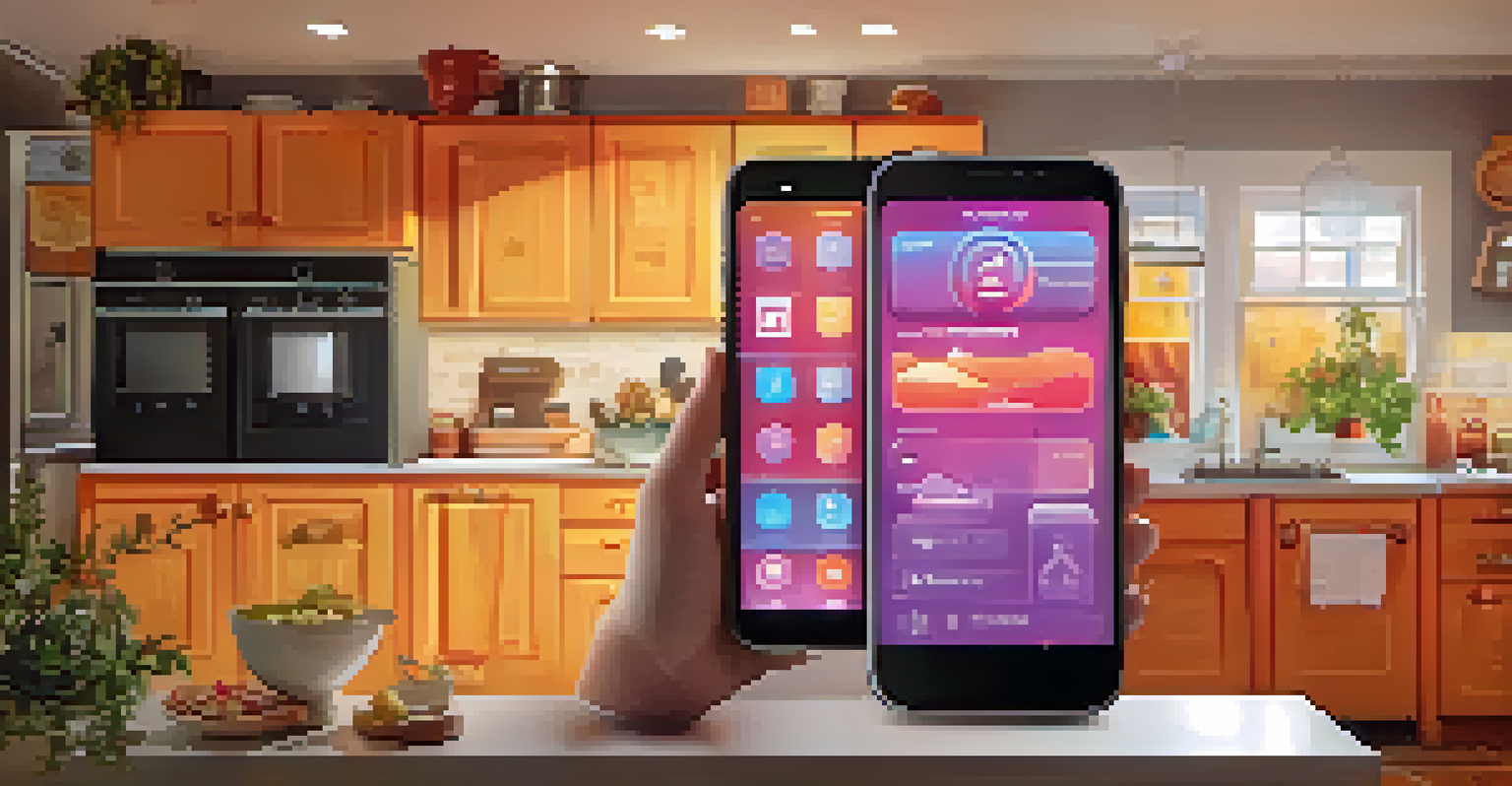Smart Home Integration with IoT: A Beginner's Guide

Understanding Smart Homes and IoT Basics
A smart home is a residence equipped with devices that automate tasks, offering convenience and efficiency. At the heart of this innovation is the Internet of Things (IoT), which connects various devices over the internet, allowing them to communicate and work together. Imagine your refrigerator sending you a text when you're out of milk—that's the magic of IoT in action.
The future is already here – it's just not very evenly distributed.
IoT works by integrating sensors, software, and other technologies into everyday objects, enabling them to collect and exchange data. This connectivity not only makes life easier but also enhances energy efficiency and security. For example, smart thermostats learn your preferences and adjust the temperature accordingly, saving you money on energy bills.
In essence, understanding these basics sets the stage for exploring how to create your own smart home. With the right devices and a little know-how, you can transform your living space into a hub of technology that responds to your needs.
Key Benefits of Smart Home IoT Integration
Integrating IoT into your home offers a range of benefits, from increased convenience to enhanced security. For instance, you can control lights, locks, and appliances from your smartphone, making it easier to manage your home while you're away. This level of control not only streamlines your daily routine but also provides peace of mind.

Energy efficiency is another major advantage. Smart devices can track usage patterns and adjust settings automatically, leading to significant savings. For example, smart bulbs can dim or turn off when you leave a room, reducing unnecessary energy consumption.
Smart Homes Enhance Convenience
Integrating IoT devices into your home allows for seamless control and automation, making daily tasks easier and more efficient.
Lastly, the security aspect cannot be overlooked. Smart cameras and doorbells allow you to monitor your home in real-time, providing alerts for any unusual activity. With these tools, you can feel more secure and informed about what’s happening at home, even when you’re miles away.
Choosing the Right Smart Devices for Your Home
When starting your smart home journey, selecting the right devices is crucial. You'll want to consider your specific needs and lifestyle. For example, if you frequently travel, smart locks and security cameras might be top priorities to keep your home safe.
Technology is best when it brings people together.
Compatibility is another key factor; ensure that the devices you choose can communicate with each other. Many brands offer hubs that allow different products to work together seamlessly. This interoperability is essential for creating a cohesive smart home experience.
Finally, think about scalability. As technology evolves, you may want to add more devices in the future. Opt for systems that can grow with you, allowing for easy additions without the need for a complete overhaul.
Setting Up Your Smart Home Network
Establishing a reliable home network is the foundation of your smart home. Start by ensuring you have a strong Wi-Fi connection, as most smart devices rely on the internet to function. A good router can make all the difference, extending coverage to every corner of your home.
Once your network is in place, it’s time to connect your devices. Most smart devices come with user-friendly apps that guide you through the setup process. Simply follow the prompts, and you’ll be up and running in no time, often with just a few taps on your smartphone.
Energy Efficiency Saves Money
Smart devices can optimize energy usage, leading to substantial savings on utility bills through automated adjustments.
Don’t forget to consider security when setting up your network. Change default passwords and enable two-factor authentication where possible to protect your devices from unauthorized access. A secure network ensures all your smart devices operate safely and effectively.
Integrating Voice Assistants in Your Smart Home
Voice assistants like Amazon Alexa, Google Assistant, and Apple Siri have become integral to smart home setups. These tools allow you to control your devices hands-free, making everyday tasks incredibly convenient. Just imagine asking your assistant to dim the lights or play your favorite playlist while you cook dinner.
To integrate a voice assistant, ensure your smart devices are compatible. Most popular devices support voice commands, allowing you to create a seamless experience. Plus, you can set up routines—like having your coffee maker start brewing when your alarm goes off.
Moreover, voice assistants continue to evolve, learning your preferences and adapting over time. They can help manage your schedule, provide reminders, and even control other smart devices, streamlining your day-to-day life.
Automating Your Home with Smart Routines
One of the most exciting aspects of smart home integration is automation. By setting up routines, you can create a personalized environment that responds to your lifestyle. For instance, you could program your lights to turn on at sunset or have your thermostat adjust before you return home from work.
Smart routines can also enhance safety. Imagine having outdoor lights turn on automatically when motion is detected, deterring potential intruders. These small adjustments can make a big difference in how secure and comfortable you feel in your home.
Security Features Provide Peace of Mind
Smart home technology, like cameras and alarms, enables real-time monitoring and alerts, enhancing your home's security even when you're away.
Creating routines is often as simple as using an app to select triggers and actions. With just a few taps, you can customize your home environment to suit your daily habits, making your living space more intuitive and enjoyable.
Maintaining and Upgrading Your Smart Home System
Maintaining your smart home is essential for ensuring everything operates smoothly. Regularly update your devices and apps to take advantage of new features and security enhancements. Many devices will prompt you to update, but it's good practice to check periodically.
As technology advances, you might find opportunities to upgrade existing devices for better performance or features. Keep an eye out for new models that offer improved functionality, such as better energy efficiency or enhanced connectivity.

Finally, troubleshooting any issues promptly is crucial. Most smart device manufacturers provide support resources and community forums to help you resolve problems. Staying proactive about maintenance and upgrades will keep your smart home running seamlessly.